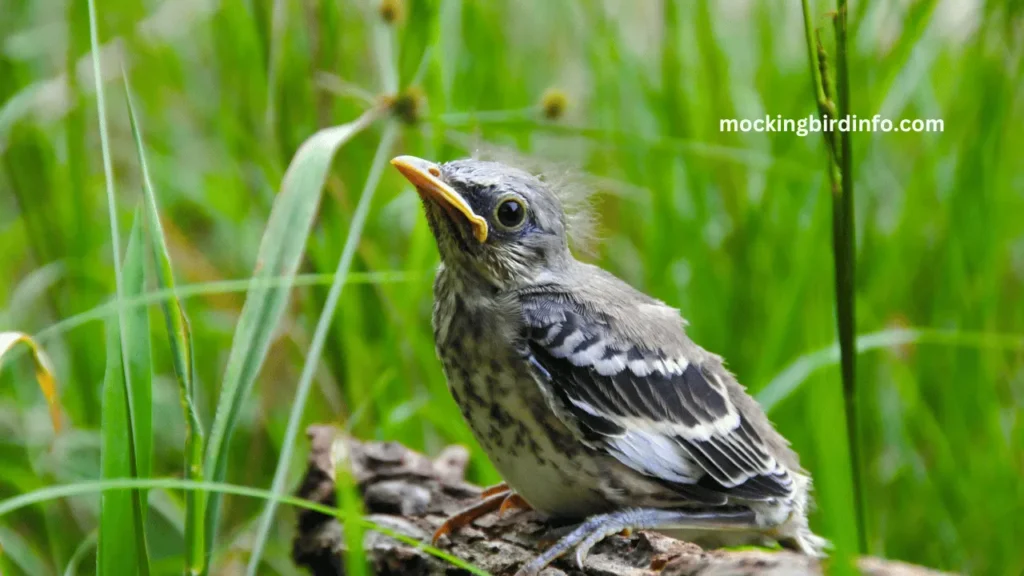Have you ever been outdoors on a bright morning when a familiar melody catches your ear, only to realize it’s a mockingbird imitating a bird call you thought you knew well?
The mimicry is uncanny. Mockingbirds possess the incredible ability to replicate a vast array of sounds—from other birds’ songs to human-made noises like car alarms and even dogs barking.
This astonishing vocal ability is not just a fun trick of nature. It holds a deeper significance that plays a pivotal role in their survival and social life.
Mockingbirds aren’t just imitating random sounds; they are using their voices for very specific purposes. In fact, mockingbirds mimic for reasons related to territorial defense, mate attraction, and self-expression.
Understanding why they mock is more than just appreciating their vocal skills—it’s about diving into the fascinating evolutionary mechanisms that have shaped their unique ability to mimic and how it helps them thrive in a competitive world.
In this article, we will uncover the evolutionary benefits of mimicry, explore the types of sounds mockingbirds mimic, and delve into how social learning influences their vocal development.
By the end, you’ll understand the deeper significance of why mockingbirds mock and gain a new appreciation for their extraordinary abilities.

Contents
- 1 1. Evolutionary Benefits of Mimicry
- 2 3. The Role of Social Learning
- 3 4. The Neural Basis of Mimicry
- 4 Conclusion
- 5 FAQs
- 5.1 1. Why do mockingbirds mimic other birds’ songs?
- 5.2 2. Can mockingbirds mimic human-made sounds?
- 5.3 3. Do mockingbirds mimic to communicate with each other?
- 5.4 4. How do mockingbirds learn to mimic sounds?
- 5.5 5. What types of sounds do mockingbirds mimic?
- 5.6 6. Why do male mockingbirds have a large repertoire of songs?
1. Evolutionary Benefits of Mimicry
Territorial Defense
Mockingbirds are known for their aggressive defense of their territory, and their vocal mimicry is a key part of this defense. By mimicking the calls of predators or larger, more aggressive birds, mockingbirds create the illusion of a threatened environment.
This vocal trickery helps deter other birds from invading their territory. For example, a mockingbird might mimic the call of a hawk, a bird of prey that many species fear.
This can cause other birds to steer clear of the area, keeping the mockingbird’s territory secure.
The variety of sounds mockingbirds mimic gives them a vocal arsenal to manage different challenges, especially during the breeding season when they need to protect both their nests and food resources.
These diverse sounds can range from the calls of hawks, which signify danger, to alarm calls of other birds, which can trick potential invaders into thinking the area is under threat.
Mate Attraction
In addition to defense, mimicry plays a crucial role in mate attraction. During courtship, male mockingbirds use their vocal skills to demonstrate their fitness to potential mates.
The ability to mimic a wide array of sounds signals a healthy, strong individual, capable of learning and adapting. It is thought that the more diverse and extensive a male’s repertoire of songs and calls, the more attractive he is to females.
A large song repertoire can indicate genetic strength, intelligence, and the ability to thrive in a competitive environment.By adding new songs to their repertoire as they mature, male mockingbirds continue to attract mates throughout their lives.
This continuous vocal experimentation can also serve to impress females, signaling that the male is in top condition and capable of providing a stable territory.
Social Bonding
Mimicry in mockingbirds also plays a role in social bonding. Within their communities, mockingbirds often engage in vocal exchanges, and their mimicry can be a way of reinforcing social structures.
By mimicking the sounds of other birds or species around them, mockingbirds may help establish relationships and maintain social hierarchies within their environments.
This behavior facilitates a form of communication that goes beyond mere territorial defense or mate attraction—it helps in fostering connections among individuals within a group.
2. Types of Sounds Mimicked
Bird Calls
Mockingbirds are best known for their ability to mimic other bird calls. They are particularly adept at replicating the songs of songbirds, hawks, crows, and even waterfowl.
It is not unusual to hear a mockingbird imitate the songs of a blue jay, cardinal, or even the alarm call of a dove. This wide range of imitations enables them to manipulate the behavior of other birds in their environment, whether for defense or attracting mates.
These imitations help mockingbirds mask their presence or manipulate the dynamics of bird communities. By copying a red-tailed hawk’s scream, for instance, they might frighten smaller birds away from their nests or food sources, clearing the area for themselves.
Animal Sounds
Beyond birds, mockingbirds also mimic a variety of animal sounds. They can reproduce the sounds of dogs barking, cats meowing, and even frogs croaking.
This ability to mimic non-bird sounds adds another layer to their repertoire, making them truly versatile vocal performers. Some observers have even reported hearing mockingbirds imitate the sounds of motorcycles, sirens, and car alarms.
This extraordinary skill allows mockingbirds to create an environment where they are heard but not necessarily seen, helping them navigate their world.
By including these animal noises in their songs, mockingbirds blur the lines between different soundscapes, possibly confusing predators or potential rivals. It’s an example of how mockingbirds can adapt their vocalizations to suit different survival needs.
Human-Made Sounds
Perhaps the most surprising aspect of mockingbird mimicry is their ability to replicate human-made sounds. From doorbells to telephone ringtones, mockingbirds have been known to incorporate everyday noises into their song.
This may seem humorous to us, but for mockingbirds, these imitations could serve important functions. Human sounds might confuse other species or signal the presence of potential threats, such as a human nearby.
This ability to mimic urban sounds could also be a reflection of their adaptation to living in more human-dominated environments.

3. The Role of Social Learning
Learning from Parents
Young mockingbirds learn to mimic sounds from their parents and other adult birds. During the early stages of life, they listen intently to the sounds around them and start replicating what they hear.
This learning process is similar to how humans learn language—by listening to the vocalizations of others and practicing them. This social learning helps young birds build their own repertoires, which they will refine as they age.
The learning period is crucial because mockingbirds that fail to hear a diverse range of sounds may struggle to develop an impressive repertoire, potentially hindering their ability to attract mates or defend their territory.
Cultural Transmission
Mimicry also plays a role in the cultural transmission of sounds. Just as humans pass on traditions and knowledge through generations, mockingbirds share their songs and calls with one another, leading to regional variations in vocalizations.
In some areas, mockingbirds may mimic the local bird population’s calls, while in other regions, they might specialize in mimicking a different set of species, depending on what is available to them.
This process of cultural transmission means that each population of mockingbirds develops its own unique vocal culture, which can be observed through the variety of songs they produce. Over time, these differences contribute to regional identity within species.
Individual Variation
While there are shared patterns within populations, each mockingbird also has its own individual variation in vocalizations. This variation can be influenced by both genetic factors and the environmental context.
A mockingbird’s genetic makeup might predispose it to be better at mimicking certain types of sounds, while the environment it grows up in—what it hears—also shapes the songs it learns.
4. The Neural Basis of Mimicry
Brain Structure
The ability to mimic complex sounds is tied to the structure of the mockingbird’s brain. Research has shown that vocal learning in birds is supported by specialized brain regions that control sound production and auditory processing.
In particular, the premotor area of the brain helps the bird produce complex sounds, while the auditory cortex plays a role in processing the sounds it hears.
These specialized brain areas enable mockingbirds to not only replicate sounds they hear but also to modify and adapt them for various purposes.
Neural Mechanisms
The neural mechanisms that allow mockingbirds to mimic sounds are intricate and sophisticated. Neurons in the song system of a mockingbird’s brain process and store auditory information.
These neurons then enable the bird to reproduce and sometimes modify the sounds, creating a new variation. This ability to replicate complex sound patterns involves sophisticated neural networks that are able to recognize patterns in sounds and match them with vocal production.
The complexity of this process reflects the high level of cognitive function involved in mimicry. It’s not just about copying sounds—mockingbirds are able to use those sounds in ways that help them adapt to their environment.
Conclusion
Mockingbirds’ remarkable ability to mimic a wide range of sounds serves several important purposes. From territorial defense to mate attraction, their vocal mimicry allows them to communicate and interact with their environment in ways that many other birds cannot.
The evolutionary benefits of mimicry are evident in the way it helps mockingbirds protect their resources, attract mates, and navigate their social world.
In addition to their fascinating ability to mimic animal sounds, including those made by humans, mockingbirds demonstrate the incredible cognitive abilities that support their vocalization skills.
Their use of social learning and individual variation further underscores the complexity of their mimicry and the importance of preserving these remarkable birds and their habitats.
So next time you hear a mockingbird sing, remember that it’s not just a random melody—it’s a sophisticated tool for survival and communication. These birds are not just mimicking sounds; they are using them to thrive in an ever-changing world.
FAQs
1. Why do mockingbirds mimic other birds’ songs?
Mockingbirds mimic other birds’ songs to defend their territories, attract mates, and express themselves within their social groups.
2. Can mockingbirds mimic human-made sounds?
Yes, mockingbirds can imitate a variety of human-made sounds, including car alarms, sirens, and doorbells.
3. Do mockingbirds mimic to communicate with each other?
Yes, they use mimicry as a form of communication within their social groups, helping to establish bonds and maintain social structure.
4. How do mockingbirds learn to mimic sounds?
Mockingbirds learn to mimic by listening to their parents and other adult birds, starting from a young age and refining their repertoire as they grow.
5. What types of sounds do mockingbirds mimic?
Mockingbirds can mimic a wide range of sounds, including bird calls, animal noises, and human-made sounds like alarms or speech.
6. Why do male mockingbirds have a large repertoire of songs?
Male mockingbirds use a large song repertoire to attract mates, showing off their fitness and ability to thrive in a competitive environment.








